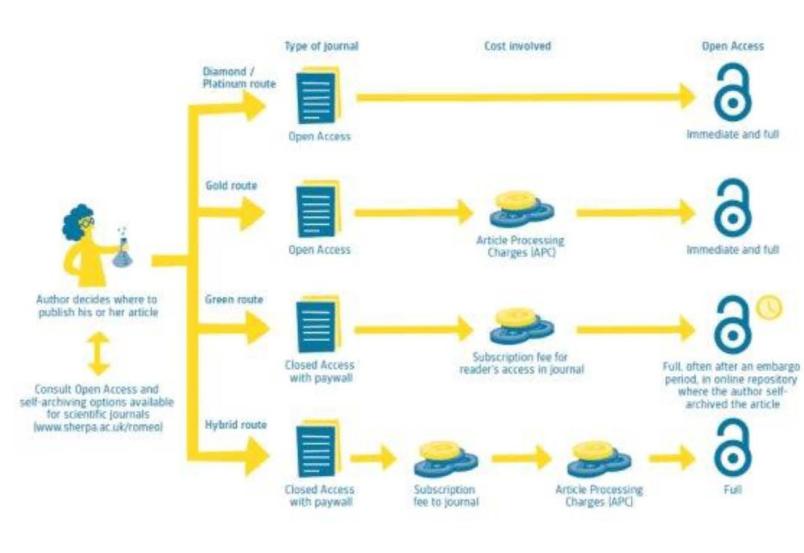For the achievement of open access (OA), authors from the University are invited to publish their contributions in a conventionally colour-coded manner:
Green OA, Gold OA and Hybrid OA.
The Green OA Model consists of authors depositing a copy of their articles in the University repository (“self-archiving”) or in a disciplinary repository.
Due to the rapid spread of institutional repositories and the increasing adoption of university policies in favour of open access, most publishers allow scientific articles to be deposited in institutional repositories either as a pre-print version (the version submitted to the publisher) or as a postprint/AAM (Author Accepted Manuscript), i.e., the author’s final version accepted for publication but without editorial layout. Publishers may set embargo periods that vary from journal to journal.

Authors may publish in fully open access electronic journals where content is freely accessible and downloadable. Authors, or their institutions, may be required to pay Article Processing Charges (APC) for the publication of articles in OA journals.

Per Diamond Open Access si intende la pubblicazione su riviste OA finanziate da Enti e Istituzioni o tramite le quote associative delle Società scientifiche. Si tratta della forma più avanzata di libero accesso alle pubblicazioni di ricerca perché non viene mai richiesta alcuna fee né agli autori per pubblicare né agli utenti finali per accedere al fulltext degli articoli. I contributi sono tutti rilasciati con licenze Creative Commons
Inoltre sono disponibili piattaforme editoriali per la pubblicazione in Open Access come ORE Open Research Europe, offerta dalla Commissione Europea per i paper legati ai progetti europei: le pubblicazioni, oltre ad essere sempre visibili accesso aperto, sono sottoposte a revisione paritaria, spesso aperta.
Publishers offer the option of making articles published in their subscription journals OA for a fee. This practice, while having the advantage of making specific articles open access, is criticised by a large part of the OA community as publishers tend to benefit simultaneously from the economic advantages of the two models (double dipping): they charge the same fixed prices as traditional commercial models (offering large bundles of journals as subscriptions to libraries) and at the same time add to these revenues those related to OA publication (APC).
